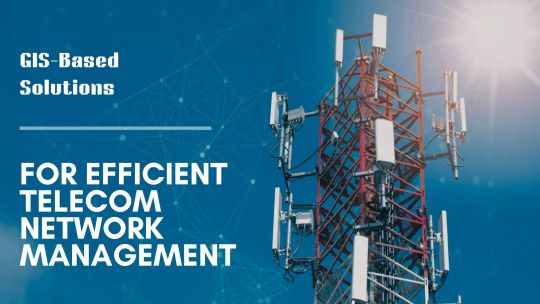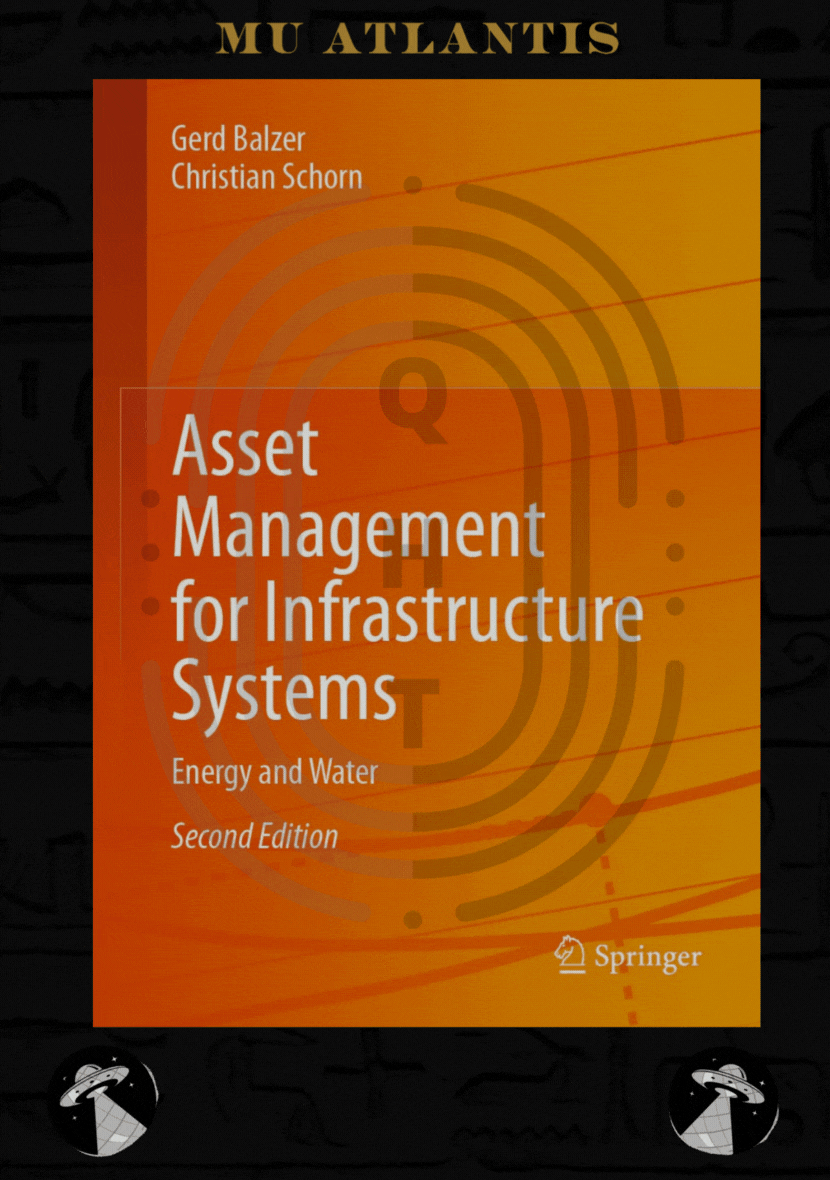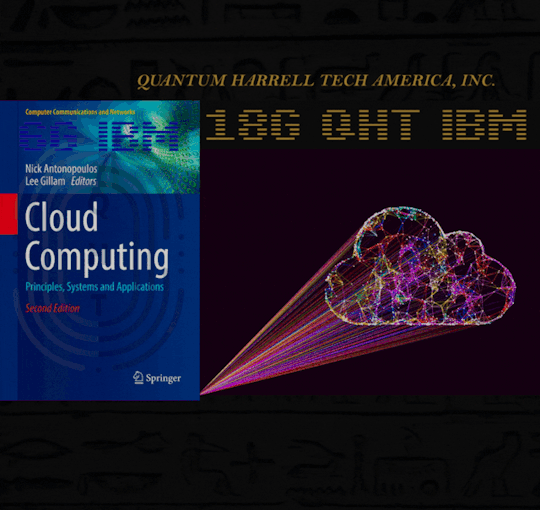#Telecom Asset Management
Explore tagged Tumblr posts
Text
mobile service management
Installation and commissioning of Network Infrastructure
Deploying new network infrastructure like fiber optic cables, base stations, and switching centers can be a complex and time-consuming process. But Etaprise Field Service Management (FSM) software can significantly streamline and optimize this process, leading to faster deployments, improved accuracy, and increased efficiency.
By leveraging Etaprise FSM software, telcos can transform the installation and commissioning of network infrastructure from a complex logistical challenge into a streamlined and efficient process, ultimately leading to faster service delivery, improved customer satisfaction, and cost savings. Here is how.
Planning and Scheduling:
Efficient work order management: Etaprise FSM software creates and tracks work orders, ensuring technicians have the right tasks, equipment, and materials assigned to them.
Optimized scheduling: Algorithms consider technician skill sets, location, and workload, minimizing travel time and maximizing resource utilization.
Real-time updates: Changes in plans or delays are instantly communicated to all stakeholders, ensuring everyone is on the same page.
Improved Field Operations:
Mobile access to work orders and documentation: Technicians have instant access to all necessary information on their mobile devices, eliminating paper-based processes and reducing errors.
Digital checklists and procedures: Etaprise FSM software guides technicians through installation and commissioning steps with step-by-step checklists, ensuring consistency and accuracy.
Automated reporting and data capture: Data on progress, equipment usage, and potential issues is automatically collected for reporting and analysis.
Enhanced Collaboration and Communication:
Real-time communication with supervisors: Technicians can easily report progress, request assistance, and share updates with supervisors in real-time.
Improved customer communication: Customers can track technician arrival times and receive updates on the installation progress through self-service portals and notifications.
Streamlined knowledge sharing: Etaprise FSM platforms can integrate with knowledge bases and training materials, enabling technicians to easily access relevant information and best practices.
We’re here to help
Call us at:
+1 669 777 5279
Email us:
#Telecommunications Field Service#Telecom Network Management#Field Service Automation#Real-Time Telecom Monitoring#Telecom Dispatch Software#AI Scheduling for Telcos#Telecom Asset Management#Remote AR Assistance#Work Order Management#Knowledge AI#Fleet Management#Customer 360#Dispatch Board#Workforce Optimization#Telecom Technician App
0 notes
Text
GIS-Based Solutions for Efficient Telecom Network Management
The telecom industry is undergoing rapid transformation, driven by the increasing demand for seamless connectivity, efficient network management, and improved customer experience. As networks become more complex, the need for innovative solutions to manage these networks has never been greater. Geographic Information System (GIS)-based solutions have emerged as a game-changer in the telecom sector, offering a robust platform for managing, analyzing, and visualizing network data. This blog explores how GIS-based solutions can revolutionize telecom network management, ensuring efficiency and reliability.
Learn more at https://www.cyberswift.com/blog/telecom-utility-solution-a-brief-overview/

#gis for 5g network planning#telecom network monitoring with gis#gis for telecom service coverage analysis#gis enabled telecom site selection#gis mapping for telecom connectivity#gis solutions for managing telecom utilities#role of gis in telecom infrastructure planning#telecom utility gis software for asset management#gis technology for fiber optic network design#geospatial analytics for telecom network optimization#telecom asset management system#gis telecom utility software#fiber optic network mapping#gis based telecom service optimization#telecom network visualization tools#utility network analysis in telecom#geospatial solutions for telecom utilities
0 notes
Text
Significance of Telecom Asset Management for Telcos
The telecommunication industry is highly competitive and rapidly shifting. Therefore, several challenges make it difficult to sustain revenue growth, increase profitability, and deliver client-centric services. Therefore, the adoption of advanced solutions like a telecom inventory management software, asset management software, sales and distribution platform, digital BSS suite, customer value management software, etc. is inevitable.
According to Next Move Strategy Consulting, the exponential growth of the global 5G infrastructure market is projected to reach a staggering 131.4 billion dollars by 2030. This emphasizes the significant importance of meticulous infrastructure management, which leads to the widespread adoption of sophisticated asset management solutions or telecom inventory management solutions.
A telecom operator needs to manage diverse physical and virtual assets. Therefore, the adoption of a tailored and innovative telecom asset management platformbecomes an essential and strategic investment. This platform streamlines the maintenance, testing, and similar operations to ensure the reliable functioning of critical infrastructure on a global scale.
The Importance of Telecom Asset Management Software:
Effective asset management is essential for long-term success for telcos, CSPs, and telecom operators. The adoption of the best telecom inventory management software for asset management offers real-time tracking of telecom assets such as inventories in warehouses, infrastructure items, and more. This centralized solution eliminates the need for disparate programs and spreadsheets. As a result, accurate data for informed decision-making and mitigating discrepancies that could impact budgets and profitability are available.
Modern telecom site management necessitates an integrated enterprise asset management system. The adoption of asset management software provides enhanced visibility into assets, including usage history, upkeep costs, location, and interconnected business processes, all accessible through a unified cloud-based dashboard.
Benefits of Asset Management Software for the Telecom Industry:
Asset Overview
Telecom asset management software simplifies the manual tracking of assets by providing real-time updates within a single application window. This efficient solution promotes quick and informed decision-making. Moreover, it helps managers keep track of all inventories, orders, partner management, distribution, and several other operations related to inventory or asset management.
Asset Tracking
The inventory management solutionfor telcos systematically provides asset tracking to monitor the location of assets and provide real-time insights into their physical whereabouts. This software also offers details of the status of each asset, ensuring optimal utilization. Asset tracking is crucial for telecom asset management and it enhances security measures surrounding valuable assets.
The asset management platform also helps in asset tracking for serialized and non-serialized items. These asset-tracking solutions cater to both indoor and outdoor asset-tracking requirements, presenting organizations with a variety of tracking solutions. Each tracking technology comes with its own set of advantages and disadvantages, accommodating diverse organizational needs.
The significance of asset tracking extends beyond mere location monitoring. It furnishes vital information such as the asset's purchase date, scheduled maintenance requirements, stock, and other details. In essence, asset tracking unveils the complete lifecycle of each asset, contributing to informed decision-making and efficient asset management practices.
Asset Maintenance
Proactive maintenance is a preventive measure taken to mitigate the risk of sudden asset failures. This approach involves regular inspections and adjustments to ensure optimal performance. Additionally, maintenance includes the replacement of old components with new ones, a process known as calibration management. This practice is crucial for optimizing asset performance and preventing unexpected downtime.
Large and valuable assets carry significant responsibilities, and neglecting their maintenance can result in sudden malfunctions. Maintenance, in this context, extends beyond mere repairs. During the maintenance process, telecom assets undergo close inspection to identify and address any potential issues.
The best inventory management software for asset management in the telecommunication industry is part of a telecom sales and distribution solution. Therefore, it is an integral solution and it makes telecom asset management simplified, streamlined, and straightforward.
Subscription Management:
In the telecom industry, advanced sales and distribution software with an inbuilt telecom asset management platform, facilitates efficient subscription management. This comprehensive software provides a detailed view of all clients, presenting crucial details such as connection speed, geographical location, and more. Similar to maintenance reminders, users receive notifications when subscriptions are approaching expiration or entail pending payments. This streamlined approach to subscription management ensures that telecom organizations can stay on top of renewals and billing cycles seamlessly. This enhances overall operational efficiency with a robust asset management solution.
Augment Operational Performance with a Powerful Telecom Inventory Management Solution
Embracing this technology is essential for telecom operators seeking sustainable growth and resilience in the dynamic landscape of the industry. The telecom inventory management platform proves invaluable, serving as a dedicated asset management solution for operators navigating the complexities of modern telecom operations.
In the telecommunication industry, operators demand a straightforward yet effective asset management solution, a part of Ventas, an AI-powered Sales and Distribution Platform, that represents complex data and figures in a simplified form. This enables telcos to make decisions based on data insights and gain momentum in the telecom industry, offering a competitive edge.
Are you interested in exploring more details about telecom asset management and inventory management solution?
Visit https://www.6dtechnologies.com/sales-mgt/inventory-management-system/
0 notes
Text
Website: https://www.ezaccesscommunications.com/
EZ ACCESS COMMUNICATIONS is a reputable telecom expense management specialist, offering a range of services including expense management, network solutions, IT solutions, mobility solutions, voice solutions, and security solutions. With over 50 years of experience, the company is known for its efficient, honest, and professional approach. EZ ACCESS COMMUNICATIONS provides unbiased consultations and strives to deliver the best in-class telecommunications services, ensuring customer satisfaction through open communication and expert support.
Yelp: https://www.yelp.com/biz/savacom-palm-coast
Keywords: telecom expense management collaboration tools for business voip solutions for small business sip trunking services it infrastructure solutions cybersecurity solutions for small businesses business collaboration tools telecom expense management companies telecom expense management services voip solutions for business it infrastructure management solutions small business collaboration tools online collaboration tools for business telecom invoice audit outsourced telecom expense management telecom expense management audit telecom expense management consulting telecom expense management system sip trunk service provider siem solutions for small business best business collaboration tools remote collaboration tools for business best voip solution for small business best telecom expense management global telecom expense management mobile telecom expense management telecom expense management outsourcing telecom expense management solution top telecom expense management service provider it infrastructure monitoring solution it infrastructure solutions and services cybersecurity solutions for businesses social business collaboration tools it infrastructure security solution it infrastructure solutions provider cloud computing for organizations voip solutions for large business voip solutions for medium business best ucaas systems for enterprise business ucaas for enterprise telecom expense management auditing invoice processing telecom and it expense management services telecom expense management asset and service telecom expense management service costs best sip trunk service global sip trunking connect service good sip trunk service hybrid it infrastructure solutions infrastructure it solution it infrastructure solution provider near me dedicated internet access solutions cost-effective cybersecurity solutions for small businesses cloud computing for healthcare organizations standard organizations for cloud computing best small business collaboration tools
#telecom and it expense management services#telecom expense management asset and service#telecom expense management service costs#best sip trunk service#global sip trunking connect service#good sip trunk service#hybrid it infrastructure solutions#infrastructure it solution#it infrastructure solution provider near me#dedicated internet access solutions#cost-effective cybersecurity solutions for small businesses#cloud computing for healthcare organizations#standard organizations for cloud computing#best small business collaboration tools
1 note
·
View note
Text
Best 10 Blockchain Development Companies in India 2025
Blockchain technology is transforming industries by enhancing security, transparency, and efficiency. With India's growing IT ecosystem, several companies specialize in blockchain development services, catering to industries like finance, healthcare, supply chain, and gaming. If you're looking for a trusted blockchain development company in India, here are the top 10 companies in 2025 that are leading the way with cutting-edge blockchain solutions.
1. Comfygen
Comfygen is a leading blockchain development company in India, offering comprehensive blockchain solutions for businesses worldwide. Their expertise includes smart contract development, dApps, DeFi platforms, NFT marketplaces, and enterprise blockchain solutions. With a strong focus on security and scalability, Comfygen delivers top-tier blockchain applications tailored to business needs.
Key Services:
Smart contract development
Blockchain consulting & integration
NFT marketplace development
DeFi solutions & decentralized exchanges (DEX)
2. Infosys
Infosys, a globally recognized IT giant, offers advanced blockchain solutions to enterprises looking to integrate distributed ledger technology (DLT) into their operations. Their blockchain services focus on supply chain, finance, and identity management.
Key Services:
Enterprise blockchain solutions
Smart contracts & decentralized apps
Blockchain security & auditing
3. Wipro
Wipro is known for its extensive research and development in blockchain technology. They help businesses integrate blockchain into their financial systems, healthcare, and logistics for better transparency and efficiency.
Key Services:
Blockchain consulting & strategy
Supply chain blockchain solutions
Smart contract development
4. Tata Consultancy Services (TCS)
TCS is a pioneer in the Indian IT industry and provides robust blockchain solutions, helping enterprises optimize business processes with secure and scalable decentralized applications.
Key Services:
Enterprise blockchain development
Tokenization & digital asset solutions
Decentralized finance (DeFi) applications
5. Hyperlink InfoSystem
Hyperlink InfoSystem is a well-established blockchain development company in India, specializing in building customized blockchain solutions for industries like finance, gaming, and supply chain.
Key Services:
Blockchain-based mobile app development
Smart contract auditing & security
NFT marketplace & DeFi solutions
6. Tech Mahindra
Tech Mahindra provides blockchain-as-a-service (BaaS) solutions, ensuring that businesses leverage blockchain for improved transparency and automation. They focus on finance, telecom, and supply chain industries.
Key Services:
Blockchain implementation & consulting
dApp development & smart contracts
Digital identity management solutions
7. Antier Solutions
Antier Solutions is a specialized blockchain development firm offering DeFi solutions, cryptocurrency exchange development, and metaverse applications. They provide custom blockchain solutions for startups and enterprises.
Key Services:
DeFi platform development
NFT & metaverse development
White-label crypto exchange development
8. HCL Technologies
HCL Technologies offers enterprise blockchain development services, focusing on improving security, efficiency, and automation across multiple sectors.
Key Services:
Blockchain-based digital payments
Hyperledger & Ethereum development
Secure blockchain network architecture
9. SoluLab
SoluLab is a trusted blockchain development company working on Ethereum, Binance Smart Chain, and Solana-based solutions for businesses across industries.
Key Services:
Smart contract & token development
Decentralized application (dApp) development
AI & blockchain integration
10. Mphasis
Mphasis provides custom blockchain solutions to enterprises, ensuring secure transactions and seamless business operations.
Key Services:
Blockchain for banking & financial services
Smart contract development & deployment
Blockchain security & risk management
Conclusion
India is emerging as a global hub for blockchain technology, with companies specializing in secure, scalable, and efficient blockchain development services. Whether you're a startup or an enterprise looking for custom blockchain solutions, these top 10 blockchain development companies in India provide world-class expertise and innovation.
Looking for the best blockchain development partner? Comfygen offers cutting-edge blockchain solutions to help your business thrive in the decentralized era. Contact us today to start your blockchain journey!
2 notes
·
View notes
Text
How Reliance Jio Coin Could Transform India's Crypto Market

The Indian cryptocurrency market is on the verge of a major transformation, and the introduction of Reliance Jio Coin could serve as a significant catalyst. As one of India's largest conglomerates, Reliance has a history of disrupting industries, and its foray into blockchain and cryptocurrency is highly anticipated.
What Is Reliance Jio Coin?
Reliance Jio Coin is rumored to be a digital cryptocurrency developed by Reliance Jio, a subsidiary of Reliance Industries Limited (RIL). The coin aims to facilitate digital transactions, promote blockchain adoption, and potentially integrate with Jio's vast telecom and e-commerce ecosystem.
The Growing Interest in Cryptocurrency in India
India has witnessed a surge in crypto adoption, despite regulatory uncertainties. Factors such as technological advancements, increased smartphone penetration, and digital payments adoption have fueled interest in blockchain and cryptocurrency.
Potential Benefits of Jio Coin
Reliance Jio Coin could bring numerous benefits to the Indian crypto market, including:
Mass Adoption of Digital Currency – Jio has over 400 million users, providing a large user base for Jio Coin.
Blockchain Innovation – It could promote blockchain technology adoption across various industries.
Seamless Integration with Jio Platforms – Possible use cases in JioMart, JioFiber, and JioMoney.
Regulatory Compliance – Reliance’s credibility may facilitate government support.
Financial Inclusion – Can help unbanked populations participate in digital finance.
Challenges Facing Jio Coin’s Implementation
While the potential is vast, Reliance Jio Coin must overcome several challenges:
Regulatory Uncertainty – India’s stance on crypto regulations is still evolving.
User Awareness and Education – Widespread adoption requires education on cryptocurrency.
Market Volatility – Cryptocurrencies experience price fluctuations that may impact adoption.
Security Concerns – Ensuring data and transaction security is crucial.
How Jio Coin Can Shape India's Crypto Future
Reliance Jio Coin could act as a game-changer in the Indian cryptocurrency space. By leveraging Reliance's technological infrastructure, it could lead to:
Greater public trust in cryptocurrencies.
Increased innovation in decentralized finance (DeFi).
The emergence of blockchain-based government and enterprise solutions.
The Role of Blockchain in Jio Coin’s Success
Blockchain technology is at the core of any cryptocurrency. For Jio Coin to be successful, it must ensure:
Transparency – Every transaction should be recorded on a public ledger to ensure security and accountability.
Scalability – Handling large transaction volumes efficiently will be essential.
Smart Contracts – Enabling automation and reducing intermediaries in transactions.
Energy Efficiency – Exploring eco-friendly consensus mechanisms like Proof of Stake (PoS).
Possible Use Cases of Jio Coin
Jio Coin could extend beyond just a digital currency. Some potential applications include:
Retail Payments – Users may use Jio Coin for everyday transactions via JioMoney.
E-commerce Integration – JioMart could accept Jio Coin, boosting online shopping adoption.
Supply Chain Management – Blockchain-powered logistics solutions to enhance transparency.
Tokenized Assets – Real estate and stock investments via tokenization.
Loyalty Rewards – Customers could earn Jio Coin as part of promotional campaigns.
Impact on India's Digital Economy
With India's digital payment ecosystem already thriving, Jio Coin could:
Reduce dependency on traditional banking by offering decentralized financial solutions.
Encourage foreign investment in Indian blockchain startups.
Support the government’s Digital India initiative by accelerating fintech innovation.
Create new job opportunities in blockchain development, security, and compliance.
Future Roadmap for Jio Coin
If Jio Coin becomes a reality, the following steps might be taken:
Regulatory Approvals – Securing legal compliance before public launch.
Initial Pilot Programs – Testing Jio Coin with select users and businesses.
Mass Adoption Campaigns – Promoting awareness and incentivizing usage.
Expanding Use Cases – Integrating with more sectors like healthcare and education.
Global Expansion – Partnering with international crypto exchanges for trading.
Conclusion
Reliance Jio Coin has the potential to revolutionize India's crypto landscape. While challenges remain, the credibility and market dominance of Reliance Jio could pave the way for mass adoption and regulatory clarity in the sector. If executed effectively, Jio Coin could emerge as India’s leading digital currency, setting a precedent for corporate-backed cryptocurrencies.
2 notes
·
View notes
Text
Anil Ambani: Navigating Success and Challenges in India's Business Arena biography and career achievements
Anil Ambani biography and career achievements is an Indian businessman and a distinguished determine in the u . S .'s company global. Born on June 4, 1959, he is the more youthful brother of Mukesh Ambani, the chairman and biggest shareholder of Reliance Industries. Anil Ambani is known for his role inside the Reliance Group, a conglomerate that spans a couple of sectors along with telecommunications, electricity, infrastructure, and monetary services. His adventure inside the commercial enterprise global is marked by using both sizable achievements and extraordinary challenges.

Early Life and Education
Impact of Anil Ambani’s leadership on Reliance Jio turned into born into a own family with a robust business background. His father, Dhirubhai Ambani, based Reliance Industries in 1966, which might develop to come to be certainly one of India's largest conglomerates. Anil Ambani pursued his education at Mumbai's well-known Kishinchand Chellaram College, where he earned his degree in Commerce. He then went on to study at the Wharton School of the University of Pennsylvania, where he acquired an MBA.
Career Beginnings and the Formation of Reliance Anil Dhirubhai Ambani Group
Anil Ambani role in transforming Indian telecommunications sector"started out his career operating in the own family enterprise, studying the intricacies of dealing with a big business enterprise. In 2002, following the death of Dhirubhai Ambani, the Reliance Group turned into divided among Anil and Mukesh Ambani. Anil Ambani obtained manage of the newly fashioned Reliance Anil Dhirubhai Ambani Group (ADAG), which turned into hooked up to handle a number of industries.
Under Anil's management, ADAG improved rapidly into numerous sectors. The institution varied into telecommunications, with the release of Reliance Infocomm (now Reliance Jio). This mission revolutionized the Indian telecom region with its aggressive pricing and vast network coverage. It is vision helped position Reliance Jio as one of the leading telecommunications groups in India, gambling a vital function in making records services greater affordable and on hand to tens of millions of Indians.
Expansion into Power and Infrastructure
In addition to telecommunications, focused on strength technology and infrastructure improvement. Reliance Power turned into hooked up to faucet into the growing energy needs of India. The business enterprise undertook numerous ambitious projects, which include the improvement of coal-based electricity flowers and different power resources. Reliance Infrastructure, another arm of ADAG, centered on infrastructure development, inclusive of roads, airports, and metro structures.
These ventures have been part of Anil Ambani’s broader imaginative and prescient of contributing to India’s monetary increase by means of addressing critical infrastructure and electricity needs. His strategy concerned making an investment in big-scale tasks and leveraging the organization’s economic energy to power improvement throughout various sectors.
Financial Challenges and Restructuring
Despite the preliminary achievement, Anil Ambani and the ADAG confronted good sized economic challenges in the later years. The organization’s formidable growth brought about high ranges of debt, and international economic downturns impacted its operations. The corporation's financial troubles have been compounded via growing hobby quotes and economic slowdowns.
By the mid-2010s, ADAG became grappling with widespread debt and financial stress. This situation led to a sequence of restructuring efforts, along with asset income and attempts to renegotiate debt phrases. The institution struggled to maintain its previous boom trajectory, and several of its projects confronted delays and value overruns.
They monetary difficulties have been in addition exacerbated by using criminal and regulatory demanding situations. The organization turned into involved in diverse legal battles, which include issues related to company governance and regulatory compliance. These challenges affected the overall belief of ADAG and its monetary balance.
Legacy and Impact
Despite the economic problems, Anil Ambani’s contributions to India's business landscape remain noteworthy. His position in transforming the telecommunications area with Reliance Jio is a massive success. The creation of lower priced information offerings has had a profound impact on India's virtual economy, contributing to accelerated internet penetration and digital inclusion.
In the infrastructure quarter, ADAG’s investments in roads, electricity, and metro systems have contributed to the improvement of crucial infrastructure in India. These tasks have had a long-lasting effect on city development and financial boom in diverse areas.
It philanthropic efforts are also really worth mentioning. The Anil Dhirubhai Ambani Foundation, hooked up via the Ambani family, has been concerned in diverse charitable sports, which include education, healthcare, and catastrophe comfort. The foundation’s initiatives purpose to cope with social problems and support underprivileged groups.
Recent Developments and Future Outlook
In current years, Anil Ambani and the ADAG have endured to awareness on restructuring and realigning their commercial enterprise operations. The organization has sought to streamline its portfolio, divesting from non-center assets and focusing on key areas of increase. Efforts to reduce debt and enhance monetary balance continue to be a concern.

Financial challenges faced by Anil Ambani’s Reliance Anil Dhirubhai Ambani Group The broader monetary and enterprise surroundings in India, such as authorities rules and marketplace traits, will play a vital function in shaping the future of ventures. As the Indian financial system continues to conform, opportunities and demanding situations will emerge, influencing the strategic path of the Reliance Anil Dhirubhai Ambani Group.
#Financial challenges faced by Anil Ambani’s Reliance Anil Dhirubhai Ambani Group#Anil Ambani biography and career achievements#Impact of Anil Ambani’s leadership on Reliance Jio#Anil Ambani role in transforming Indian telecommunications
2 notes
·
View notes
Text
Every Minute Count [EMC] 4 My Divinely CHOSEN [D.C.] Extravagant Music Clique [EMC] of 144,000 9 Ether Gen X Underground Schwarz [U.S.] Quantum Intranet [Qi] QUADRILLIONAIRES... Mathematically Accessing 1907 Computerized [MAC] Defense Industries [MDI] of the Pentagon's Corporate [PC] iCloud Infrastructure Application [iCIA] Records @ 1921 QUANTUM 2023 HARRELL 2024 TECH 2025 LLC of ATLANTIS [L.A.] 5000
IMMORTAL U.S. MILITARY KING SOLOMON-MICHAEL HARRELL, JR.™

OMMMMM

OMMMMM

NOT OUR INTERACTIVE CIA ASSET MANAGEMENT INFRASTRUCTURE [MI = MICHAEL] SYSTEMS?!?!?!

WE ECCENTRIC 1921 MUSIC 1968 CELEBRITIES [EMC] OF THE PENTAGON'S BLACK MILITARY BUDGET

9/11 cyber weapons of mass destruction... wayyyyyyyyyyyyyyyyyyyyyyyyyyyyyyyyyyyyy above your mundane 2023 pay scale?!?!?!

us golden 144,000 9 ether quadrillionaires ain't on tv

us private intranet engineers control the public telecom internet industry... shhh

OMMMMM

OMMMMM

golden 1968 9 ether gen x trillionaires?!?!?!

AMERICANS DON'T KNOW NOTHING ABOUT THIS GOLDEN 9 ETHER QUADRILLIONAIRE LIFE... DEEP INSIDE INNER EARTH [Qi]

WE QUANTUM INTRANET [Qi] QUADRILLIONS @ QUANTUM HARRELL TECH LLC

HEIL SCHWARZE SONNE HARRELL!!!
#om#o michael#experts making classics#emc#quantumharrelltech#mu:13#harrelltut#quantumharrelltut#kemet#king tut#u.s. michael harrell#excellent mic controllers#everyone must contribute#ægiptian memory computing#america's so called wealthiest ain't even the wealthiest#iCIA
1 note
·
View note
Text
Revolutionizing Field Operations with FieldEZ’s Field Service Management Software
In today’s fast-paced business environment, organizations across industries rely heavily on efficient field operations to deliver exceptional customer service and streamline internal processes. FieldEZ Technologies stands at the forefront of this transformation with its cutting-edge field service management software. By offering powerful, scalable solutions like ServiceEZ, SalesEZ, and RetailEZ, FieldEZ empowers companies to optimize their service delivery, increase workforce productivity, and gain real-time visibility into field operations.
What is Field Service Management Software?
Field service management software (FSM) is a digital solution that helps businesses manage their field operations efficiently. From scheduling and dispatching to tracking, invoicing, and reporting, FSM software automates tasks that were once manual and error-prone. It is especially valuable for industries like telecom, healthcare, energy, home services, and manufacturing, where timely service delivery is essential.
FieldEZ’s FSM software goes beyond basic automation — it integrates advanced features such as GPS-based tracking, dynamic scheduling, digital forms, and real-time analytics, ensuring field technicians are always connected and informed.
Why Choose FieldEZ?
FieldEZ Technologies has developed a comprehensive ecosystem tailored for businesses with mobile workforces. Their product suite — ServiceEZ, SalesEZ, and RetailEZ — caters to various operational needs:
ServiceEZ focuses on maintenance and repair services, making it ideal for organizations looking to implement advanced maintenance management systems.
SalesEZ boosts sales performance by streamlining lead tracking, customer interactions, and reporting.
RetailEZ helps manage retail execution and merchandising activities with precision and ease.
Together, these tools enhance the capabilities of on-ground teams and bring operational transparency to management.
Key Features of FieldEZ’s Service Management Software:
FieldEZ’s service management software is built with user-friendliness and customization in mind. Here are some of the key features:
Smart Scheduling & Dispatch: Assign the right technician to the right job at the right time, reducing delays and boosting customer satisfaction.
Mobile Workforce Management: Real-time visibility into field employee location, job status, and task completion via a user-friendly mobile app.
Work Order Management: Create, assign, track, and close work orders seamlessly, ensuring nothing falls through the cracks.
Inventory & Asset Management: Monitor tools and equipment efficiently, reducing downtime due to unavailability of resources.
Customer Communication Tools: Send automated updates, reminders, and post-service feedback requests directly to customers.
Reports & Dashboards: Gain deep insights into workforce productivity, service quality, and operational efficiency.
Benefits for Businesses:
Implementing a field service management software like FieldEZ’s provides measurable advantages:
Improved Operational Efficiency: Automating workflows and reducing paperwork saves time and resources.
Higher First-Time Fix Rates: With proper scheduling and information access, technicians complete jobs faster and more accurately.
Enhanced Customer Satisfaction: Prompt services, real-time updates, and follow-ups keep customers happy and engaged.
Data-Driven Decisions: Managers can analyze field performance trends and optimize strategies accordingly.
Compliance & Safety: Digital documentation ensures adherence to service protocols and safety regulations.
Scalable Across Industries:
Whether you’re running a small service company or managing a large enterprise, FieldEZ’s solutions are scalable to your needs. Their maintenance management systems and service solutions are designed to adapt across industries like telecom, healthcare, consumer goods, and utilities.
Final Thoughts:
FieldEZ Technologies has redefined how companies manage their mobile workforce. With its intuitive and powerful field service management software, businesses can automate operations, improve service delivery, and stay ahead in an increasingly competitive market. Solutions like ServiceEZ, SalesEZ, and RetailEZ make FieldEZ a reliable partner for organizations aiming for digital transformation in field operations.
#fieldez#field service#services#apps#management software#field management#field service software#field force management#field workforce management#workflow automation
0 notes
Text
Unlocking Opportunities in the Digital Era

In the ever-evolving landscape of the telecommunications industry, pursuing a Post Graduate Diploma in Management (PGDM) with a specialization in Telecom Management can be a strategic career move. India, home to some of the top business schools like Poddar Business School in Rajasthan, offers excellent opportunities for students to gain expertise in this field. Let's delve into the significance of Telecom Management in a PGDM course and how it can shape the future of aspiring professionals.
Navigating the Digital Transformation: The telecom industry is at the forefront of the digital revolution, driving connectivity and technological advancements. A specialized PGDM in Telecom Management equips students with the knowledge and skills to navigate this transformation. They gain insights into emerging technologies like 5G, the Internet of Things (IOT), cloud computing, and artificial intelligence (AI), enabling them to contribute effectively to the industry.
Understanding Industry Dynamics: Telecom Management programs provide a comprehensive understanding of the telecom industry's structure, competitive landscape, and regulatory environment. Students learn about market trends, consumer behavior, and the impact of globalization on the industry. This knowledge enables them to make informed decisions and develop strategies that address the challenges and opportunities in this dynamic sector.
Developing Managerial Competencies: PGDM courses with a specialization in Telecom Management develop a range of managerial competencies specific to the telecom industry. Students acquire skills in strategic planning, project management, operations, marketing, and finance, tailored to the unique requirements of the sector. These skills empower them to lead telecom organizations and drive growth in an increasingly competitive market.
Leveraging Data Analytics: In the digital era, data is a valuable asset for telecom companies. PGDM programs in Telecom Management emphasize data analytics skills, enabling students to extract meaningful insights from large datasets. They learn to analyze customer behavior, identify market trends, and optimize business operations. Proficiency in data analytics equips graduates with a competitive edge in decision-making and positions them for leadership roles.
Fostering Innovation and Entrepreneurship: Telecom Management programs encourage students to think innovatively and explore entrepreneurship opportunities in the industry. They learn about emerging business models, disruptive technologies, and startup ecosystems. This fosters an entrepreneurial mindset and equips graduates to identify untapped market niches, develop innovative solutions, and launch their ventures.
Networking and Industry Exposure: Top business schools in India, such as Poddar Business School, facilitate industry interactions, guest lectures, and internships in collaboration with leading telecom companies. This provides students with networking opportunities and firsthand exposure to real-world challenges and practices. Such engagements enable students to develop professional connections and gain practical insights that enhance their employability.
In conclusion, pursuing a PGDM with a specialization in Telecom Management from a top business school in India, like Poddar Business School in Rajasthan, offers immense potential for aspiring professionals. The program equips students with the necessary knowledge and skills to thrive in the dynamic telecom industry. From understanding industry dynamics and leveraging data analytics to fostering innovation and entrepreneurship, Telecom Management in a PGDM course unlocks opportunities in the digital era and positions graduates for successful careers in this evolving sector.
0 notes
Text
Sector Overview: Income-Focused Exposure Through High Dividend ETF
Highlights:
Focus on income-generating equities across multiple industries.
Includes ETFs with structured payout strategies.
Covers sector allocation, distribution schedules, and index-linked design.
The equity income segment includes baskets of publicly traded companies with a primary focus on cash distribution. These entities span sectors such as utilities, finance, energy, and telecommunications. One commonly used vehicle in this space is the high dividend ETF, designed to reflect equity performance from issuers with consistent payout histories. These ETFs group dividend-paying companies into a single product, tracked and reported by fund administrators.
Underlying Index and Methodology
Each high dividend ETF is constructed based on a specific methodology linked to an index. The selection criteria often include payout consistency, distribution ratio thresholds, and liquidity measures. The index serves as the reference point, and constituents are periodically rebalanced or reviewed. While methodologies differ between providers, the purpose remains aligned with maintaining a focus on stable distribution issuers.
Sector Weighting in High Dividend ETFs
Sector weighting in a high dividend ETF generally leans toward industries known for regular distribution activity. Utilities, banks, and telecom providers are frequently represented due to their long-standing corporate structures and regulated revenue models. Weighting may also include energy and real estate companies based on dividend policy alignment and historical payout behavior.
Distribution Frequency and Payout Models
Distributions in a high dividend ETF are paid out based on the income received from the underlying securities. These distributions can follow monthly, quarterly, or semi-annual schedules depending on the ETF structure. The amount and timing are disclosed in advance by the fund manager, and payout ratios depend on the income flow from the underlying portfolio holdings.
Geographic Allocation of Equity Components
Many high dividend ETFs are region-specific, including Canadian-focused, U.S.-listed, or globally diversified issuers. Canadian high dividend ETFs often prioritize companies listed on the TSX that maintain consistent dividend declarations. In contrast, global variations may include multinational corporations operating across several jurisdictions with a long dividend history.
Fund Structure and Expense Characteristics
Each high dividend ETF operates within a fund structure that reflects unit-based participation in an underlying portfolio. Fund administrators provide data on total assets, management fees, and income breakdown. Expense characteristics are publicly reported and influence the net distribution received by unit holders. Structural transparency is a standard feature of these offerings.
Liquidity and Trading Volume of Units
Units of high dividend ETFs are traded on public exchanges and follow standard equity trading practices. Liquidity is supported through authorized participants and market makers, helping maintain price alignment with net asset value. Daily volume and bid-ask spread information is made available to assist in tracking performance consistency.
Rebalancing and Portfolio Turnover
High dividend ETFs undergo periodic rebalancing to reflect index changes or strategy updates. These adjustments can result from corporate actions, dividend suspension, or sector shifts. Portfolio turnover data is published as part of regular fund disclosures and reflects how frequently underlying assets are changed to align with fund objectives.
0 notes
Text
How does ISO 27001 Certification in Uganda support information security management?

What is ISO 27001?
ISO 27001 Certification in Uganda, ISO 27001 is the international standard that defines Information Security Management Systems (ISMS). It was created in conjunction with ISO, which stands for International Organization for Standardization (ISO) and offers a method to manage sensitive information of firms, ensuring privacy and security. It is also accessible only for authorized users. The standard applies to all businesses, regardless of their size, type, or location. This includes companies across Uganda.
Why is ISO 27001 Important in Uganda?
With Uganda’s increased reliance on cloud-based services, digital platforms, and data-driven systems, companies are more susceptible to risks like those associated with
Access without authorization
Cyberattacks and ransomware
Insider data breaches
Fines and penalties for non-compliance to the rules
The delay in operations is due to the removal of personal data. ISO 27001 helps mitigate these security risks by establishing an international standard that protects data.
How ISO 27001 Certification Supports Information Security in Uganda
This is how ISO 27001 Certification in Uganda helps businesses improve their information security practices:
1. Risk Identification and Management: ISO 27001 encourages organizations to analyze, determine, and manage security risks that could affect information using a risk-based approach. This will enable Ugandan businesses to identify and address deficiencies proactively rather than reacting to threats once the damage has been done.
2. Establishing Security Controls: The standard contains the following list of 114 controls (Annex A) in areas like:
Control of access
Cryptography
Physical security
Business continuity
Compliance
The controls have been created to satisfy the specific requirements of the company’s risk profile and ensure the highest level of security.
3. ISO 27001 supports compliance with Uganda’s: Data Protection and Privacy Act (2019) and other international laws about the privacy of personal information (like GDPR). It signifies that your business is dedicated to protecting your personal information and privacy. It also builds trust in your customers and regulators.
4. Protecting Customer and Stakeholder Information: When implementing an accredited Information Security Management System (ISMS), businesses can assure customers that their information is stored securely. This increases trust with customers, improves the brand’s reputation, and provides opportunities for international agreements and partnerships.
5. Minimizing Operational Disruptions: Cyberattacks can disrupt business processes and result in significant financial losses. ISO 27001 includes business continuity planning and incident response management, aiding Ugandan companies in recovering quickly from interruptions.
6. Promoting a Security Culture: ISO 27001 promotes employee awareness and accountability by providing education, communication, and documents. Everyone, from the top managers to lower staff, is on the same page in securing information assets.
7. Continuous Improvement Through Audits: The certification process includes an internal audit, reviews of management, and external monitoring audits. This will ensure constant monitoring and improvement of the security system for information over time.
Who Should Get ISO 27001 certification in Uganda?
Banking institutions, financial institutions
Telecom & IT companies
Hospitals, healthcare, and hospitals
Higher education institutions
Government & public agencies
E-commerce and digital service providers no matter what industry you work in, if you work with sensitive data, ISO 27001 certification is an investment worth making.
Business Advantages of ISO 27001 Certification in Uganda
Contracts with international and local partners.
Meet the tender eligibility requirements
Avoid costly penalties if you do not comply.
Build trust with customers and your partners.
Increase brand’s reputation
Gain an edge in the marketplace
How to Obtain ISO 27001 Certification in Uganda?
1. Gap Analysis: Assess your current security practices regarding data.
2. Documentation: Develop ISMS guidelines and policies
3. Implementation: Implement risk control measures and train employees
4. Internal Audit: Examine whether the programs are effective and pinpoint their weaknesses.
5. External Audit: is conducted by an organization that certifies
6. Certification Issue: It is valid for 3 years, with an annual monitoring
Why Factocert for ISO 27001 Certification in Uganda
We provide the best ISO 27001 Certification in Uganda who are knowledgeable and provide the best solutions. Kindly contact us at [email protected]. ISO 27001 Certification consultants in Uganda and ISO 27001 auditors in Uganda work according to ISO standards and help organizations implement ISO 27001 certification consultants in Uganda with proper documentation.
For more information, visit ISO 27001 Certification in Uganda.
Related Link:
ISO Certification in Uganda
ISO 9001 Certification in Uganda
ISO 14001 Certification in Uganda
ISO 45001 Certification in Uganda
ISO 13485 Certification in Uganda
ISO 27001 Certification in Uganda
ISO 22000 Certification in Uganda
CE Mark Certification in Uganda
0 notes
Text
UAE Government Cybersecurity: Compliance & Protection

The United Arab Emirates is one of the fastest-growing digital economies in the world. From smart cities to paperless governance and AI integration — the UAE is betting big on technology. But with innovation comes cyber risk. In response, the UAE government launched its National Cybersecurity Strategy (NCS) to secure the digital transformation.
In this blog, we decode the UAE Cybersecurity Strategy for 2024–2025, explore what it means for businesses, and outline how you can align your organization with national goals.
2. What Is the UAE Cybersecurity Strategy?
The National Cybersecurity Strategy is a government-wide framework designed to:
Build a secure and resilient cyber environment
Protect critical digital infrastructure
Enhance national and economic security
Promote trust in digital services
It is overseen by the UAE Cybersecurity Council, which was established in 2020 and reports directly to federal authorities.
3. Key Objectives of the 2024–2025 Strategy
The updated strategy, launched in late 2023, outlines five strategic pillars:
1. Cybersecurity Governance & Policy
Introduce a unified cybersecurity legal framework
Ensure coordination between federal and emirate-level agencies
Standardize cybersecurity compliance across sectors
2. National Cyber Resilience
Protect Critical Information Infrastructure (CII)
Improve response to large-scale cyber attacks
Establish Sectoral CSIRTs (Cybersecurity Incident Response Teams)
3. Cybersecurity Innovation & Research
Support local development of cybersecurity tools and platforms
Establish national bug bounty programs
Fund academic research in AI-powered security
4. Cybersecurity Workforce Development
Train 50,000 cybersecurity professionals by 2026
Create certification programs and skill standards
Encourage women and youth participation in cybersecurity
5. International Collaboration
Build partnerships with global cybersecurity agencies
Harmonize cross-border data protection and cyber laws
Participate in global incident response exercises
4. How This Strategy Impacts UAE Businesses
Whether you’re a fintech startup, logistics company, or a real estate giant — the strategy directly affects your digital operations.
Here’s how:
✅ Mandatory Compliance RequirementsSectors like finance, healthcare, telecom, and government contractors will need to meet updated regulations related to data protection and incident reporting.
✅ Vendor Risk Oversight You will be required to vet third-party vendors for cybersecurity compliance — especially cloud providers and payment platforms.
✅ Employee Training ExpectationsInternal awareness and cybersecurity training will be expected — not just optional.
✅ Incident Response ReportingOrganizations must report certain cyber incidents within defined timeframes, similar to the Personal Data Protection Law (PDPL).
5. Real-Life Application: The Dubai Smart City Push
As Dubai rolls out 5G-powered smart infrastructure, the Cybersecurity Strategy mandates that all government and semi-government entities integrate security-by-design models in their digital transformation.
This means any business working on IoT devices, AI applications, or smart services must meet minimum cybersecurity benchmarks to qualify for contracts.
6. How to Align Your Business with the Strategy
Here’s a roadmap for proactive alignment:
✅ Step 1: Understand Your Risk Profile
Identify your digital assets, data categories, and critical business processes.
✅ Step 2: Conduct a Cybersecurity Gap Assessment
Compare your existing cybersecurity practices with expected controls outlined by the UAE Cybersecurity Council.
✅ Step 3: Build a Governance Framework
Appoint cybersecurity leads, develop internal policies, and prepare a documented incident response plan.
✅ Step 4: Invest in Security Technology
Adopt solutions for:
Email security
Network segmentation
Endpoint protection
Cloud security posture management
✅ Step 5: Educate and Train Your Teams
Train all employees on phishing, password hygiene, and incident reporting. Run mock drills.
✅ Step 6: Partner with a Cybersecurity Advisor
Consult with firms like Centre Systems Group to stay updated, implement controls, and conduct penetration testing.
7. How Centre Systems Group Can Help
At Centre Systems Group, we provide end-to-end support to align your operations with the UAE’s 2025 Cybersecurity Strategy.
Our services include:
✅ Security policy development ✅ Cyber risk audits and ISO 27001 alignment ✅ Employee awareness training programs ✅ Cloud security consulting ✅ Managed detection and response (MDR) ✅ PDPL and NESA compliance implementation
We combine local market understanding with global best practices to help you meet every regulatory and security requirement confidently.
Cybersecurity in the UAE is no longer just about protecting data — it’s about enabling a secure digital future. The UAE’s Cybersecurity Strategy 2024–2025 reflects the country’s ambition to lead in digital innovation without compromising national security.
For businesses, this is both a challenge and an opportunity. Those who act early can gain compliance, client trust, and a competitive edge.
📩 Partner with Centre Systems Group to future-proof your business against emerging cyber risks — and stay aligned with the UAE’s strategic vision. Source Url: https://centresystemsgroup.net/blog/understanding-the-uae-cybersecurity-strategy-2024-2025/
0 notes
Text
All Ordinaries Index: Telstra Group Ltd (ASX:TLS) Expands Telco Infrastructure Across Regions
Highlights:
Telstra Group Ltd continues to lead the telecommunications sector through domestic and international infrastructure expansion.
The company strengthens digital connectivity via network enhancements and strategic technology deployments.
ASX:TLS is part of the All Ordinaries Index, reflecting a diverse mix of listed Australian entities.
Telecommunications Sector Overview with All Ordinaries Index Relevance Telstra Group Ltd (ASX:TLS) operates in the telecommunications sector and plays a key role in digital infrastructure and network services across Australia and select international regions. As part of the All Ordinaries Index, the company is recognised among a broad spectrum of entities listed on the Australian Securities Exchange. The All Ordinaries Index captures the performance of leading companies across multiple sectors, providing a representative view of market movement and corporate participation in the Australian economy.
Telstra’s inclusion in this index affirms its prominence in technology-driven services, network operations, and communications-based innovation. With an extensive footprint in mobile, broadband, and enterprise network solutions, Telstra supports both individual and business-grade connectivity. Its services extend from metropolitan regions to remote communities through satellite, fibre, and wireless networks.
Core Network Capabilities and Infrastructure Assets Telstra operates one of the largest mobile networks in the Southern Hemisphere, complemented by extensive fibre optic lines and subsea cable systems. These infrastructure components form the backbone of its core network services, connecting domestic endpoints and international data hubs. The company has built a long-standing reputation for reliability in signal coverage, bandwidth scalability, and low-latency performance.
Network enhancements remain a regular feature of Telstra’s operations, including upgrades to base stations, switching centres, and transmission equipment. The company also continues to develop software-defined networking (SDN) capabilities and edge computing infrastructure. These capabilities support advanced enterprise solutions, media distribution, and content streaming applications.
Enterprise and Government Solutions Beyond consumer telecommunications, Telstra Group Ltd serves business and government clients with end-to-end network management services. Solutions include managed networks, cloud access systems, mobile workforce integration, and global data routing. The company’s enterprise segment aligns closely with public sector needs, supporting secure and scalable connectivity for mission-critical platforms.
Telstra’s services cover sectors such as education, healthcare, emergency response, and defence communications. These deployments require specialised configurations to ensure continuity and data integrity. The company also offers satellite communication services to regional operations, further extending its technological reach to remote infrastructure hubs.
International Ventures and Strategic Growth Telstra’s growth strategy includes expanding its international cable systems and joint ventures with global telecom operators. Through Telstra International, the company maintains a presence in multiple Asia-Pacific nations, enabling cross-border data services and business process platforms. Submarine cable partnerships with international providers enhance bandwidth availability and connect Australia to major economic centres in Asia and North America.
Recent focus has included the extension of data centre agreements and partnerships with hyperscale cloud providers. These collaborations are designed to deliver cloud-ready connectivity and high-speed transfer capacity for modern application environments. Telstra’s role in next-generation networking is further strengthened by participation in mobile innovation platforms and international standards organisations.
Technology Roadmap and Sector Evolution The company’s roadmap aligns with broader telecommunications sector evolution trends. These include shifts toward 5G deployment, network virtualisation, and convergence between mobile and fixed-line services. Telstra has completed nationwide 5G rollout milestones and continues to add 5G coverage through spectrum allocation upgrades and smart antenna installations.
Research and development within Telstra focus on artificial intelligence applications in network diagnostics, predictive maintenance, and customer service optimisation. Additional developments include investments in network security frameworks and end-user authentication technologies. These upgrades support seamless connectivity while maintaining operational control over distributed digital systems.
0 notes
Text
Applying Volatility Management Across Industries
Applying Volatility Management Across Industries Volatility management is a risk and portfolio management technique proposed by Moreira and Muir in 2017 [1]. It has since been widely adopted by industry practitioners. The technique relies on the idea that volatility is autocorrelated but only weakly correlated with future returns. Practically, this means increasing exposure to the underlying asset when volatility is low and decreasing exposure when volatility is high. This approach allows investors to improve risk-adjusted returns. Reference [2] continues this line of research by applying volatility-managed techniques to U.S. industry portfolios. It uses four measures of volatility: one-month realized variance, one-month realized volatility, six-month exponentially weighted moving average (EWMA) of realized volatility, and GARCH-forecasted one-month volatility. The author pointed out, From my analysis, volatility management significantly improves the performance of nearly all sector allocations, providing evidence that volatility management can be a useful tool for investors intending to increase exposure to specific industries. Consistent with my prior belief, certain industries respond better to volatility management, including technology and defensive sectors. Although marginally similar in generating enhanced Sharpe ratios, volatility management using a six-month exponentially weighted moving average volatility is the most consistent in delivering strong results in the face of leverage constraints and transaction costs. The strategy boosts the Sharpe ratios for the technology, telecom, and utilities sectors by 27.6%, 30.5%, and 25.5%, respectively. This suggests that volatility management is not just theoretically appealing but practical for a mean-variance investor. However, the statistical significance of volatility-management strategies wanes when testing performance over selected subperiods and recessionary periods. Therefore, I provide evidence that the investors can confidently implement volatility-management strategies for the technology portfolio, over other industries, due to its economically and statistically significant improvements regardless of sample period and transaction costs. In short, the article concluded that, Volatility management using a six-month EWMA volatility measure is the most consistent, The strategy improves Sharpe ratios in the technology, telecom, and utilities sectors, though not all sectors benefit equally. Technology performs best due to the persistence of its volatility, The statistical significance of volatility-managed strategies weakens when tested over selected subperiods and recessionary periods. Have you applied volatility management techniques to your portfolio? Let us know what you think in the comments below or in the discussion forum. References [1] Moreira, A., & Muir, T. (2017), Volatility-managed portfolios. Journal of Finance, 72(4), 1611–1644. [2] Ryan Enney, Sector-Specific Volatility Management: Evidence from U.S. Equity Industry Portfolios, Claremont McKenna College, 2025 Originally Published Here: Applying Volatility Management Across Industries via Harbourfront Technologies - Feed https://ift.tt/EKXPdSh June 16, 2025 at 06:40PM
0 notes